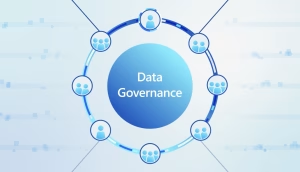
Security Tip of the Week – Fake Form, Real Phish
Cybercriminals are sending emails with QR codes that lead to fake Google Forms, tricking users into entering their login credentials.
Since the outbreak of the coronavirus pandemic, the working world has shifted toward remote working solutions and remote workforce collaboration. While some companies have ordered their staff to return to offices, other firms have said that employees will be allowed to work remotely indefinitely. As new stages of the pandemic have emerged, companies have continued to explore offsite work arrangements and technology, and the phenomenon of remote working looks set to continue gaining traction and acceptance.
One of the primary goals for any enterprise — whether operating remotely or in an office environment — is collaboration, both internally between employees and externally between itself and partner organizations. Collaboration is critical for peer and client teamwork, supervisory observation, and management approval, so work can transpire and progress.
If too many employees operate independently in silos, team members, different departments, and firms doing business with one another won’t know what their counterparts are doing, how far they’re progressing, and other critical details of ongoing projects.
In essence, “one hand won’t know what the other is up to,” and the joint efforts, team participation, and partnerships that form the backbone and intelligence of most organizations will become weakened and diluted. Collaboration is critical for companies to stay on target, maintain alignment and achieve business goals.
Remote work poses more challenges for collaborative working and positive company culture than in-person work. But given proper technology, tools and strategies, remote working can be just as effective, if not more so, than in-person efforts.
By its nature, remote working increases flexibility, as remote workers are often able to set their own schedules, pace of work, dress codes, and limitations on distractions (or lack thereof). In fact, true remote teams are not restricted to one working environment, but have the flexibility to choose from an unlimited number of them.
Because remote working allows many employees to feel more comfortable, productivity often increases compared to work performed in in-person settings. This outcome often surprises managers and corporate officers of organizations, but there are numerous studies to show that these productivity differences are real and substantial.
Because many remote workplaces are actually people’s homes, costs for such environments are minimal. Even in cases where temporary or improvised work locations are used (such as co-working facilities), costs are invariably less than long-term, dedicated, and purpose-built offices.
Studies have shown that companies that allow virtual teams not only attract new employees, but also help retain existing ones as well. Increased flexibility is a major factor in both attracting and retaining employees.
Keller Schroeder has experience in creating remote workforce collaboration tools and solutions using cloud computing technology. Keller Schroeder is adept at leveraging tools such as voice, video, email, instant messaging, and other public and private communication formats to boost workplace productivity and increase effective workforce collaboration.
Many of Keller Schroeder’s employees are used to working in the field at client locations, so they have firsthand experience with remote workforce collaboration applications and infrastructure that are in use internally at Keller Schroeder, in addition to what they install for clients.
Keller Schroeder helps customers enable secure and effective remote working solutions using tools such as Cisco WebEx, Cisco Unified Communications Manager, Cisco Umbrella, and Cisco Duo security applications.
Since before the outbreak of the coronavirus pandemic, Keller Schroeder has helped clients implement remote workforce collaboration solutions. With more than 200 satisfied customers to our name, we can help your organization maximize remote working.

Cybercriminals are sending emails with QR codes that lead to fake Google Forms, tricking users into entering their login credentials.

Beware of a new phishing scam targeting X users where cybercriminals send fake emails claiming unauthorized login attempts.

Explore the key features and benefits of Microsoft Purview to determine if this platform aligns with your data management needs.

Learn how our team of passionate developers is embracing AI responsibly to drive innovation and help businesses thrive in 2025.